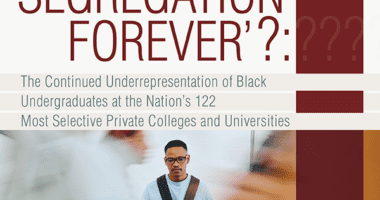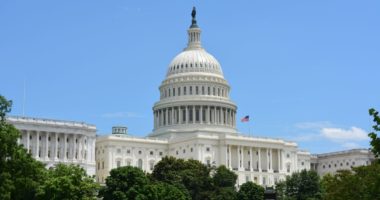Higher Ed’s Pivotal Role in Breaking the Cycle of Poverty
Today, I testified before the United States Commission on Civil Rights as it convenes a hearing on the effect of college access and success on the socioeconomic mobility of people of color. I’m glad that the commission is digging into this subject because it gets too little attention. Instead of paving the path to economic opportunity and social mobility, American higher education too often operates as an engine of inequality. That needs to change.
Since the 1980s, earnings among those at the top of the economic ladder have grown exponentially, while earnings among those at the bottom of the ladder have fallen backward. Now, instead of being among the most equal nations on earth, we are one of the most unequal with income inequality third-highest in the developed world.
At the same time, there are growing problems with social mobility. If you are born poor today, it is harder than at any time since the 1920s to work your way up the economic ladder. Indeed, rather than being the “land of opportunity,” the U.S. is now tied with the United Kingdom and Italy for being the developed countries where those born into poverty are least likely to escape it as adults. Ironically, children born poor in Canada today are more likely to be able to live the American Dream than those born poor here in the U.S.
At the macro level, of course, better and more equal education is not the only thing that needs to change in order to turn these patterns around and head our country back toward the principles we hold dear. There are a lot of important things that enlightened public policy could and should do.
At the individual level, though, quality education is the only way up. As generations on generations of African American parents have taught their children, “A good education is the only thing that nobody can ever take away from you.”
Today, with only a high school diploma, just under half of the children born poor in America today will remain poor as adults. And even more will remain under the average. With a college degree, however, those numbers plummet to 1 in 6.
And for African American males the consequences of education are even starker: Among those who don’t complete high school, 68 percent will be imprisoned by age 34. With a high school diploma, that rate falls to 21 percent; with a college degree, to 6 percent.
College graduates earn more. They are less likely to be unemployed. But they also stand out in other things we value. They are more likely to vote, to volunteer, to have healthy life practices, and even to have better mental health. What our schools and colleges do, in other words, is hugely important to our economy, to our democracy, and to our society more generally.
And while lousy high schools and stingy policymaking can be blamed for some of these terrible trends, colleges themselves — through the choices they make — are not unimportant players in this drama of shrinking opportunity in America.
For starters, colleges and universities have their own financial aid dollars, called institutional aid, over which they have total control. But they often spend a lot of it on students who have no financial need whatsoever. Back in 1995, for example, public colleges and universities spent more than twice as much on students in the lowest income quintile than they did on students in the highest quintile. But today, they actually spend more on those in the top quintile.
The results are devastating: After financial aid from all sources is taken into account, the average student in a low-income family must come up each year with 72 percent of his family’s total household income to pay for college. This burden is far higher than on families in any other income category.
So yes, colleges themselves — through the choices they make — have a significant impact in deciding who comes and who doesn’t, just as they have a significant impact on who graduates and who doesn’t.
Among students who start full time in four-year colleges, fewer than 4 in 10 end up with a four-year degree in four years. When you extend the range to six years, the numbers climb to around 6 in 10. And when you look not just at the initial institution, but at whether a student graduated from any institution, the success rate climbs to about two-thirds.
That, however, is the average. Some institutions, year in and year out, manage to graduate upward of 80 percent — even 90 percent — of their students within six years. Others consistently get fewer than 15 percent, and some fewer than 10 percent, of their students through with a degree in the same time span.
Of course, some of this is about institutional selectivity and mission. In general, the colleges with high success rates tend to be highly selective, admitting only well-prepared students, pitifully few of whom are poor or of color. On the other end, the low success rate institutions tend to be open-access institutions, serving many ill-prepared students, many of whom are poor. Indeed, with enough data, you can “explain” more than 75 percent of the variance in graduation rates.
Sadly, that statistic has led many within higher education to believe that, short of admitting better-prepared students, there is nothing they can do to change the success patterns on their campuses. But this “demography as destiny” notion turns out not to be true. For all across the country, there are institutions that are far more successful than other institutions that serve exactly the same kinds of students.
An example? See my full testimony and slide deck.









